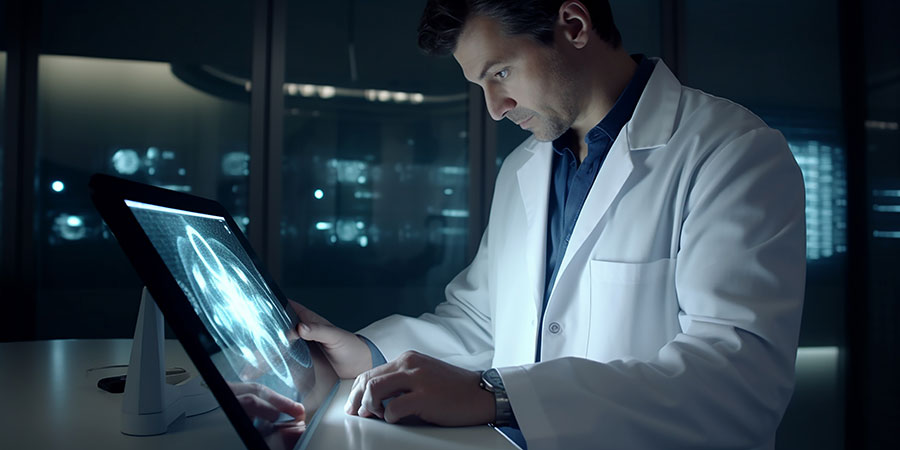Best Practices for Medical Device Software Validation and Risk Management
14-Nov-2024
Medical devices with software components are heavily regulated, with a focus on ensuring the safety and effectiveness of the devices in the medical setting. The FDA requires rigorous integrity and risk management to meet compliance standards. By adhering to these practices, medical device manufacturers can not only reduce the risk of failure but also streamline regulatory approval processes and increase patient safety Article this issue provides insight into best practices for effective medical device software authentication and risk management and how these processes align with FDA compliance requirements.
To understand medical device software validation
Software validation is a critical process to ensure that medical device software works as intended and meets user needs and regulatory requirements. The FDA for medical devices defines certification as "confirming by providing objective evidence that specific requirements for a specific intended use can be consistently met" This effectively evaluates certification testing and software design, development, and integration into a more extensive medical device system.
Importance of Risk Management in Medical Device Software
Risk management is necessary to manage the potential risks associated with medical device software, particularly in cases where problems could have severe consequences for patients FDA regulations and the ISO 14971 standard specify risk management requirements, including which it includes identifying, analyzing, and mitigating risk throughout the product life cycle.
Critical components of an effective risk management strategy include:
- Risk Assessment: A comprehensive risk assessment during the design phase can address issues during verification and post-market analysis. This includes identifying hazards, estimating their probability of occurrence, and assessing the impact on patient safety.
- Risk Management Measures: For each identified hazard, manufacturers must implement preventive measures such as fail-safes, warnings, or layoffs to reduce or eliminate them there. Proper controls can prevent high-risk issues and ensure that the software works safely under various circumstances.
- Risk-benefit analysis: For certain risks that cannot be eliminated, a risk-benefit analysis helps determine whether the product's benefits outweigh the potential risks. This applies especially to machines intended for life-sustaining operations.
- Ongoing assessment and risk assessment: Risk management is a one-time process. Ongoing monitoring through the collection of new software, user feedback, and field data enables developers to address emerging risks or unexpected software issues The risk assessment process regularly ensures that control procedures remain effective and can be updated as needed
Coordination with FDA compliance for software certification and risk management
FDA guidelines for software validation and risk management emphasize quality assurance and patient safety. FDA compliance not only helps avoid costly recalls and costs, but it also demonstrates a commitment to safety and effectiveness
Substantial compliance focuses include
- Following FDA 21 CFR Part 820: This section of the Federal Regulations refers to the Quality System Regulation (QSR) for Medical Devices. It mandates quality control programs that cover process control, manufacturing, and post-market inspections and ensures that equipment meets safety and efficacy requirements.
- Compliance with FDA guidance on software validation: The FDA guidance document on software validation provides manufacturers with a framework for verifying certification programs against regulatory standards. It includes making recommendations based on risk, defining certification requirements, and documenting overall certification activity.
- Integration of ISO 14971 standards: ISO 14971 is a globally recognized standard that focuses explicitly on risk management of medical devices. FDA recognizes that compliance with ISO 14971 is a best practice for demonstrating appropriate risk management practices.
- Cybersecurity considerations: With the increasing use of software and connectivity integrated into medical devices, cybersecurity is a growing concern for FDA premarket and postmarket cybersecurity guidance documents that provide recommendations for addressing security risks, conducting vulnerability assessments, and implementing policies to protect patient data and device operation.
- Certification of software changes: Once a medical device hits the market, what software is new or good?
Practical steps to implement effective certification and risk management
- Implementing these best practices requires a structured, interdisciplinary approach that integrates software technology, quality control, and regulatory compliance Here are some practical steps manufacturers can take.
- Building a cross-functional team: A team that includes software engineers, quality control officers, and compliance personnel ensures that all aspects of certification and risk management are adequately addressed from multiple perspectives.
- Conduct automated testing and certification where possible: Automated testing tools can improve the quality and accuracy of certification tests. This is especially useful for regression testing when software updates are available.
- Create a robust documentation system: Complete documentation provides evidence of compliance and can streamline the audit process. It also ensures traceability throughout the software development lifecycle.
- Leverage Simulation and Modeling: Simulation tools can predict the impact of potential risks and validate software performance under different circumstances. This approach can provide new insights beyond traditional testing.
- Prioritise training and continuous improvement: Regular training of all employees involved in software development and risk management fosters a culture of compliance and innovation. Continuous improvements help manufacturers stay ahead of emerging risks and increasing FDA requirements.
Conclusion
Practical medical device software certification and risk management are essential for FDA compliance and patient safety. By following best practices such as rigorous acceptance testing, thorough risk assessments, and regulatory guidelines—manufacturers can produce high-quality and reliable products.
Recent Posts

Impact of 2024 HCPCS Updates on Healthcare Providers
16-Aug-2024
The 2024 Guide to Employee Motivation
21-Aug-2024
7 Ways to Improve Performance Management at Your Company
23-Aug-2024
Choosing the Best HR Tool for Education: 5 Things You Need to Know
28-Aug-2024
Payroll Records: A Guide to Retention and Disposal
04-Sep-2024
AI Limitations Why Certain Jobs Will Always Require a Human Touch
09-Sep-2024
How the New HIPAA Rules Impact Reproductive Health Care Providers
13-Sep-2024
Best Strategies to Manage Toxic Employees and Boost Team Morale
20-Sep-2024
Top 7 Common Coding Errors That Trigger Audits and How to Prevent Them
26-Sep-2024
How OSHA is Involved in Mandating Protections for Employees
14-Oct-2024
FDA Software Classification Guidance
22-Oct-2024
Stay Ahead of FDA Inspections: Best Practices for Managing Form 483 Citations and Warning Letters
24-Oct-2024
Best Practices to Reduce Validation Effort and Costs
06-Nov-2024
Best Practices for Medical Device Software Validation and Risk Management
14-Nov-2024
Training Strategies to Comply with EEOC New Harassment Standards
14-Nov-2024
Guideline On Computerized Systems and Electronic Data in Clinical Trials
17-Dec-2024
What is Human Factor Engineering in Medical Terms?
17-Dec-2024
What is the Objective of Supervisor Training?
24-Dec-2024



